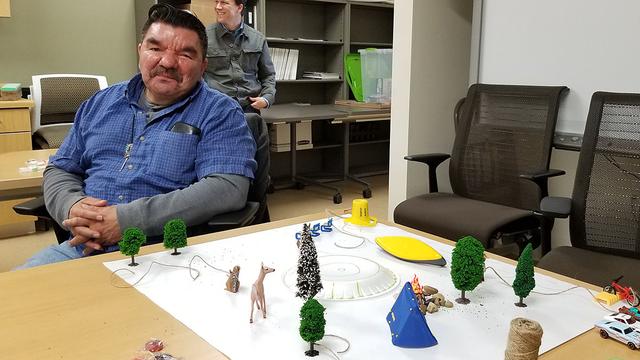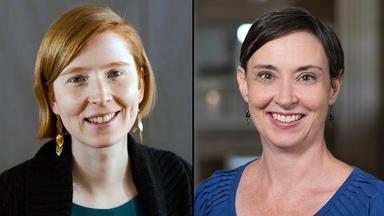By Caryn Mohr
For years, a group of Minnesotans in the northeastern part of the state have been mulling over an idea to establish a cultural interpretive center to highlight the indigenous peoples who live in the region and encourage better stewardship of the environment.
The idea gained traction when a couple of graduate students from the Humphrey School of Public Affairs partnered with the University of Minnesota Extension Northeast Regional Sustainable Development Partnership (Northeast RSDP) to move those discussions forward.
That happened in the fall of 2018 when David Wilsey, director of the Humphrey School’s Master of Development Practice program and co-chair of the Northeast RSDP’s Natural Resources work group, learned of the cultural center idea and met with the community members exploring it. Then Wilsey connected the group with two of his students who were interested in working on the project for their capstone report.
Creating a Vision
Over the course of a semester, students Amanda Rosebrock (Master of Public Affairs, 2019) and Kjerstin Yager (Master of Public Policy, 2019) facilitated a series of community convenings to explore the idea with four groups of community stakeholders: elders of the Fond du Lac Band, tribal community members living in the Duluth area, students in the University of Minnesota, Duluth (UMD) Master of Tribal Resource and Environmental Stewardship program, and staff of the city of Duluth Parks and Recreation Division.
Working with a method called PLACE IT!, participants in those sessions used materials such as rocks, figurines, blocks, paper, and markers to build physical models of the center as they envisioned it. The groups then discussed the physical and experiential attributes they incorporated into their designs. Rosebrock and Yager recorded and analyzed the themes expressed by each group.
Given the sensitivity of the topic of indigenous rights, Wilsey said Rosebrock and Yager worked diligently to make sure their convenings were inclusive. They considered questions such as how broadly the consultations should take place geographically from the proposed location of the center; which groups needed to be included; and how diverse voices could be elevated in the conversations, recognizing that many people have moved through the area over time.
“I think [the students] acquired a skill set associated with … how to engage diverse communities around complicated and contentious ideas in a productive way,” Wilsey said. “They developed a capacity and competence around facilitation of those meetings, and I dare say an enjoyment of that process.”
Wilsey described the resulting conversations as inspiring and profound, as the participants shared their thoughts on “what they want the world to be like.”
Rosebrock and Yager also evaluated other tribal interpretive centers that could provide guidance and lessons about what is involved in this kind of work. These included the National Museum of the American Indian in Washington, DC, a tribal cultural center in British Columbia, and three others in the state of Washington.
Looking Ahead
Their final report identifies themes that emerged from the community conversations and identifies issues that organizers should address to move the cultural center forward.
“I was impressed by what [the students] had accomplished in the time in which they did,” said Rick Smith, director of UMD’s American Indian Learning Resource Center, who is also part of the conversations. “The process they used with different sectors of the community – Indian and non-Indian, city, county, Cloquet and Duluth – I thought they did a really good job.”
The process helped community members come together around a vision for the center, which they say should focus on the Woodland Indian tribes extending from the East Coast to central Minnesota, and how their relationship with the environment sustained them for thousands of years.
Team members are now grappling with complex questions around how such a center might be governed, managed and financed, and where it would be located. One potential site is Spirit Island, a sacred Ojibwe island located in a widening of the St. Louis River 15 miles south of the Fond du Lac Reservation.
“A new cultural interpretive center could become a local, regional, or international hub to teach respect and care for Mother Earth, a home for Native culture and practices to thrive, and a place for storytelling and history to be told from the eyes of indigenous people,” Rosebrock and Yager concluded. “This concept represents a truly unique opportunity for this region to honor the indigenous communities that have called this place home: past, present, and future.”
Caryn Mohr is the assistant statewide director of the University of Minnesota Extension Regional Sustainable Development Partnerships (RSDP). Her original story was published by the University of Minnesota Extension.


